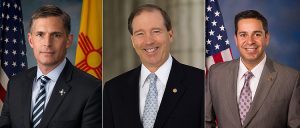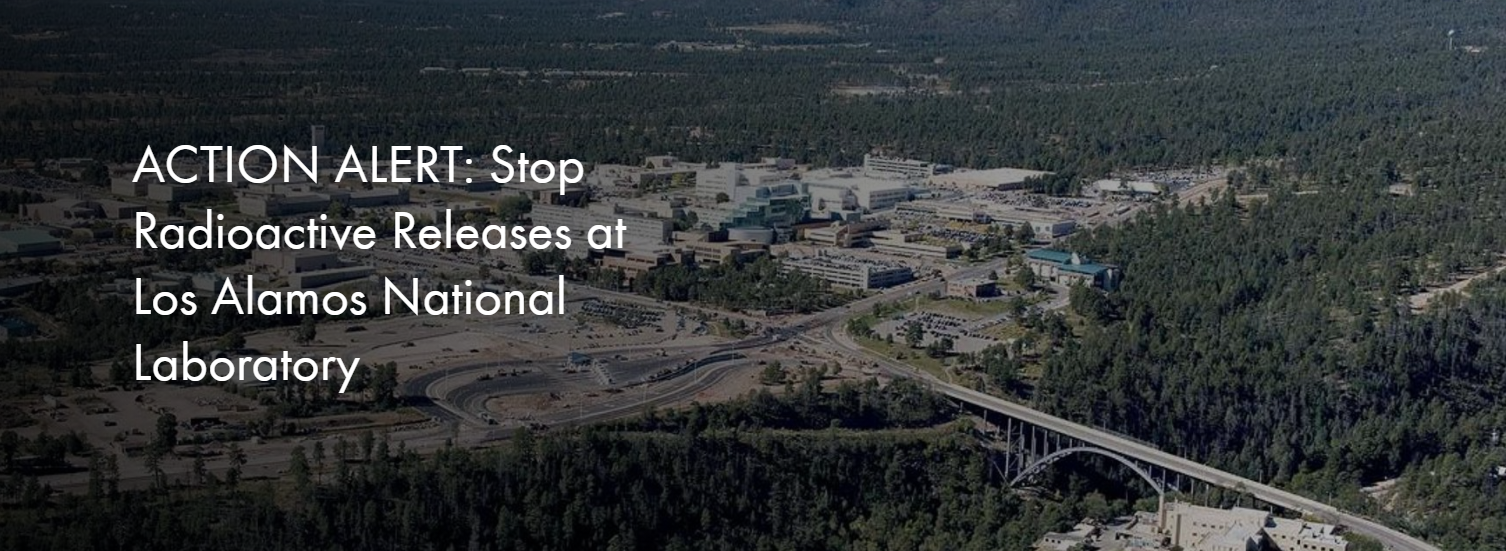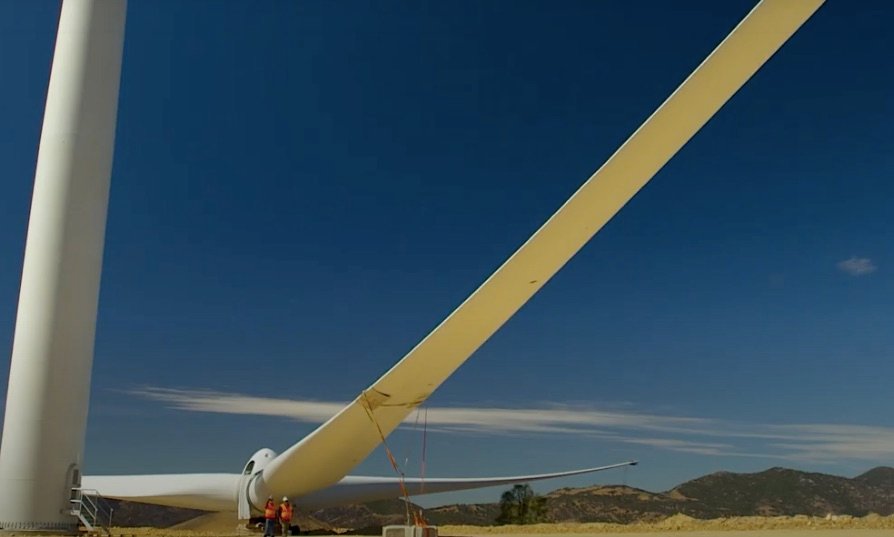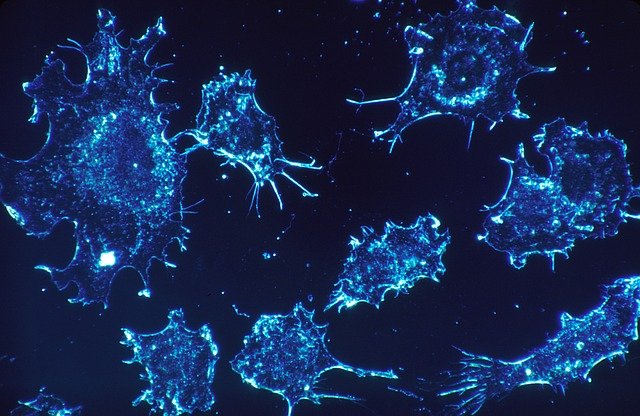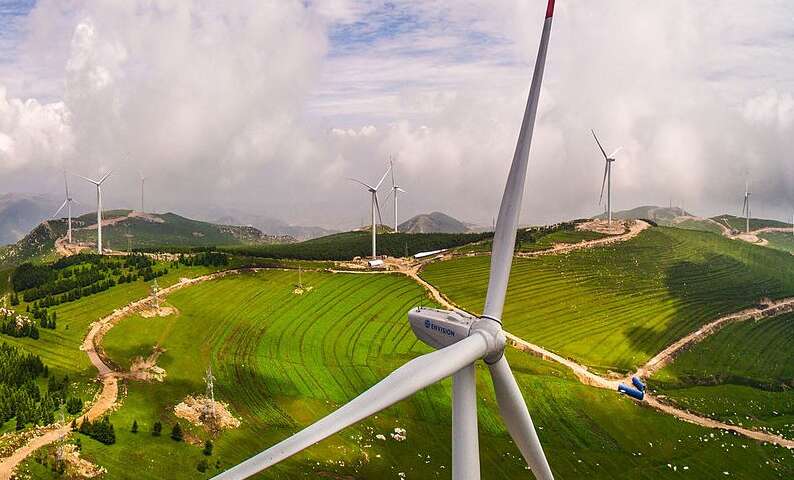2023 News Articles – All Posts
Nothing Found
It seems we can’t find what you’re looking for. Perhaps searching can help.
2022 Select Highlighted Press Items
Nuclear Modernization is the ’Absolute Minimum,’ STRATCOM Commander Says | March 8, 2022
US tested hypersonic missile in mid-March but kept it quiet to avoid escalating tensions with Russia | April 4, 2022
Putin’s Nuclear Threats Are a Wake-Up Call for the World | March 15, 2022
Intelligence report determines that Russia's WMD threats will grow as losses mount in Ukraine | March 19, 2022
China and the United States: It’s a Cold War, but don’t panic | March 10, 2022
Russian military doctrine calls a limited nuclear strike “de-escalation.” Here’s why. | March 8, 2022
North Korea says it will strike with nuclear weapons if South attacks | April 4, 2022
Flying Under The Radar: A Missile Accident in South Asia | April 4, 2022
2022 News Articles
The Poisonous Legacy of Portsmouth’s Gaseous Diffusion Plant
The plant was erected in Pike County, Ohio during the cold war to enrich uranium. Then people started getting sick. Now, they’re stuck cleaning up the mess.
By: Kevin Williams | beltmag.com
Vina Colley, a slight woman with a bob of thick blond hair, climbs into her white Ford Explorer. Her thirteen-year-old Maltese, Hercules jumps onto her lap, wedging comfortably between her legs and the steering wheel, and stays put as she navigates the steep ridges and plunging hollows of Pike County, Ohio. Colley is seventy-four, and, for nearly forty years, she’s been fighting the Portsmouth Gaseous Diffusion Plant, known locally as “The A-Plant” or PORTS. Her home library holds scores of totes filled with neatly labeled documents, a paper trail that exposes what she sees as Portsmouth’s darkest and most egregious secrets.
Nuclear weapons have always been inhumane and unacceptable, soon they will be illegal – Tilman Ruff
“The radioactive incineration unleashed by nuclear war involving even less than 1% of the global nuclear arsenal targeted on cities in one part of the world would be followed by a worldwide nuclear ice age and nuclear famine, putting billions of people’s lives in jeopardy.”
On Saturday 24 October 2020, Honduras brought the number of nations ratifying the United Nations Treaty on the Prohibition of Nuclear Weapons (‘TPNW’) to 50. This milestone means that after 90 days have elapsed, on 22 January 2021, the treaty will enter into legal force, becoming international law and binding on the states that have ratified it, and all those which ratify in future. The treaty will, however, stigmatise nuclear weapons for all states, whether or not they join the treaty.
It is fitting that 24 October also marked the 75th anniversary of the founding of the UN, ‘determined to save succeeding generations from the scourge of war’. The very first resolution of the UN General Assembly, on 24 January 1946, established a commission to develop a plan for the elimination of atomic weapons.
This is a historic achievement and an enormous win for humanity and planetary health. Outlawing nuclear weapons is an essential step towards eliminating them, which is the only reliable way to prevent their use.
Reports: Japan to Release Fukushima’s Contaminated Water Into Sea
“The disposal of contaminated water at the Fukushima Daiichi plant has been a longstanding problem for Japan as it proceeds with an decades-long decommissioning project. Nearly 1.2 million tonnes of contaminated water are currently stored in huge tanks at the facility.”
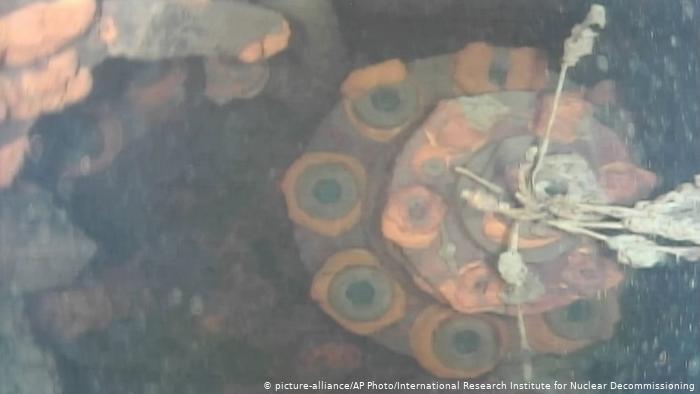
BY: Yuka Obayashi and Kaori Kaneko, Reuters | readersupportednews.com
Nearly a decade after the Fukushima nuclear disaster, Japan’s government has decided to release over one million tonnes of contaminated water into the sea, media reports said on Friday, with a formal announcement expected to be made later this month.
The decision is expected to rankle neighbouring countries like South Korea, which has already stepped up radiation tests of food from Japan, and further devastate the fishing industry in Fukushima that has battled against such a move for years.
Is Change Coming? Smartly Reshaping and Strengthening America’s Nuclear Deterrent
“Adjusting U.S. nuclear weapons plans is notoriously difficult, as nearly every president has experienced. Yet it is urgent to halt and reverse the trend of increasing nuclear capabilities that lower the threshold for nuclear war and increase miscalculation risks.”
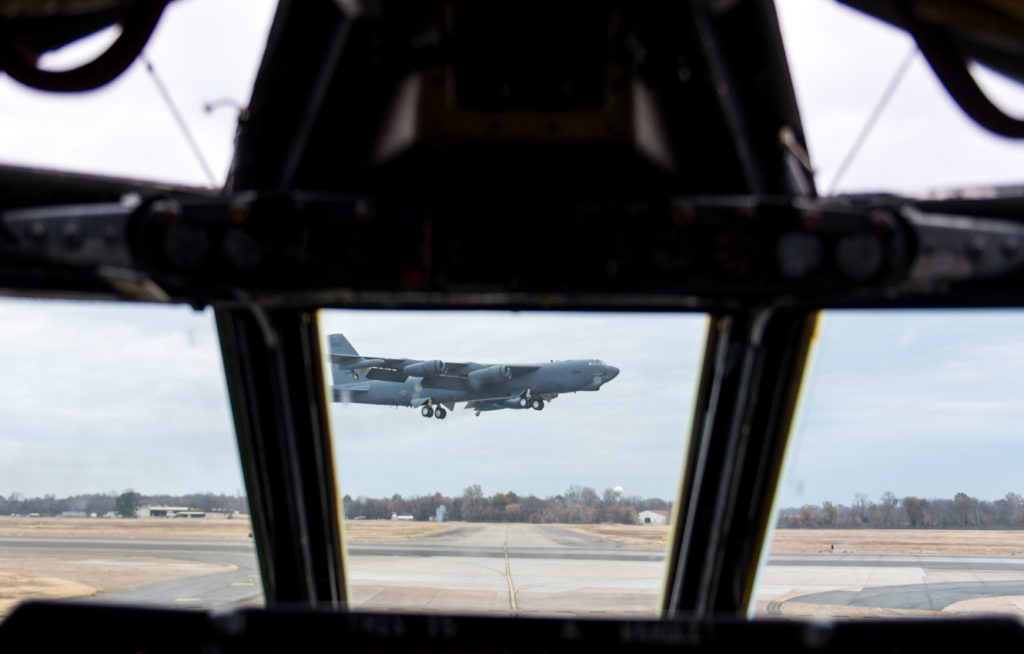
BY: CHRISTINE PARTHEMORE AND ANDY WEBER | warontherocks.com
How might America’s nuclear weapons plans change in the years ahead? Buoyed by the revelation of President Donald Trump describing a potential secret new nuclear weapon system to Bob Woodward, continuing U.S.-Russian dialogue on nuclear weapons, and the upcoming November elections, experts are speculating about what the next four years may mean for U.S. nuclear policy.
Former Vice President Joe Biden has indicated that, if elected, he would seek a posture aligned with his stated belief “that the sole purpose of the U.S. nuclear arsenal should be deterring — and, if necessary retaliating against — a nuclear attack.” This would be a pivot from Trump’s 2018 Nuclear Posture Review, which elevated the role of nuclear weapons in U.S. defense planning by, among other things, describing America’s nuclear forces as a hedge against large-scale conventional attacks and strategic cyber attacks. The declaratory shift — along with elevation of so-called low-yield nuclear options that are considered more usable, and support for more dual conventional and nuclear systems that could be indistinguishable in the absence of verification measures — increased concern that the Trump administration viewed nuclear weapons as acceptable for warfighting, not just deterrence.
Trump Thought He Had a Nuclear Deal With Putin. Not So Fast, Russia Said.
Trump administration officials want to broaden the New START accord and warn that the price of a new deal will rise after the election. Joe Biden supports a straight five-year extension of the deal.
BY: David E. Sanger and Andrew E. Kramer | nytimes.com
President Trump had a pre-election plan to show he had gotten something out of his mysteriously friendly relationship with President Vladimir V. Putin of Russia.
In the weeks before the election, the two men would announce that they had reached an agreement in principle to extend New START, the last remaining major arms control agreement between the two countries. It expires on Feb. 5, two weeks after the next presidential inauguration.
Mr. Trump has long refused to sign off on a clean five-year extension of the agreement, a step both leaders could take without Senate approval. He has described the Obama-era treaty as deeply flawed — the same thing he said about the North American Free Trade Agreement and the Iran nuclear accord — because it did not cover all of Russia’s nuclear arms, or any of China’s.
The Biggest Radioactive Spill in US History Never Ended
How the US poisoned Navajo Nation.
BY: Ranjani Chakraborty and Melissa Hirsch | vox.com
For decades, Navajo Nation was a primary source for the United States’ uranium stockpile during the nuclear arms race. It was home to more than 700 uranium mines, which provided jobs to Navajo residents. But the mining industry came with impending peril. Cases of lung cancer and other diseases began cropping up in a community that had previously had few of them. Land, air, and water was poisoned. And on July 16, 1979, the mining led to the biggest radioactive spill in US history.
Scoping Comments on the LLNL SWEIS
October 21, 2020
Ms. Fana Gebeyehu-Houston
NEPA Document Manager
National Nuclear Security Administration
Lawrence Livermore National Laboratory
P.O. Box 808, L-293, Livermore, CA 94551-0808
By Email to:LLNLSWEIS@nnsa.doe.gov
Re: Scoping Comments on the LLNL SWEIS
Dear NEPA Document Manager:
I appreciate this opportunity to submit comments on the scope of the National Nuclear Security Administration’s (NNSA) Site-Wide Environmental Impact Statement (SWEIS) for the continued operation of the Lawrence Livermore National Laboratory (LLNL) Main Site in Livermore, CA and Site 300 high explosives testing range near Tracy, CA.
Nuclear Watch New Mexico is a nonprofit watchdog organization based in Santa Fe, New Mexico. We seek to promote safety and environmental protection at nuclear facilities; mission diversification away from nuclear weapons programs; greater accountability and cleanup in the nation-wide nuclear weapons complex; and consistent U.S. leadership toward a world free of nuclear weapons.
Pursuant to the National Environmental Policy Act the purpose of scoping is: “early identification of concerns, potential impacts, relevant effects of past actions and possible alternative actions.” Therefore, I ask that the analyses I am requesting be fully undertaken – and my questions fully answered – in the draft SWEIS.
First, I am skeptical of the timing of the initiation of this new SWEIS for LLNL during the COVID-19 pandemic and just before the November 3 election. As a prerequisite, the
National Nuclear Security Administration (NNSA) should have already begun a nationwide programmatic environmental impact statement (PEIS) on expanded plutonium pit
production which would then inform the LLNL SWEIS of the Livermore Lab’s role in that national effort, which is not insignificant. Following that pit production PEIS, both a
LLNL and Los Alamos National Laboratory SWEIS should proceed in parallel. It is particularly striking that NNSA is claiming NEPA compliance while relying on an
outdated Complex Transformation Supplemental PEIS and LANL SWEIS, both completed in 2008, and refusing to prepare new or supplemental ones.
How Kodak Exposed The Atomic Bomb
Simulation of a Nuclear Blast in a Major City
WIPP gets millions in COVID-19 relief funding, operations contract extended for one year
“Are WIPP workers getting infected at the site and taking it back into the communities?” Don Hancock said. “WIPP is clearly not always a safe place, but we don’t know if WIPP is a place where workers get infected or if infected workers brought it to WIPP.”
BY: ADRIANE HEDDEN | currentargus.com
In August and September, the Waste Isolation Pilot Plant received about $3.8 million per month of federal COVID-19 funding as the U.S. Department of Energy elected to renew the facility’s primary contractor for one year despite an option to keep Nuclear Waste Partnership (NWP) at the helm of the nuclear waste repository until 2022.
NWP spokesman Donavan Mager said the site received $3.816 million in August and $3.803 in September and that the funding was designated to “support operations” although he did not elaborate on how, specifically, the public money was to be spent.
Per the latest reports from WIPP, 39 workers had contracted COVID-19 as the pandemic appeared to pose a resurgence in New Mexico in recent weeks.
Delegates Want Open Meeting on Release of Radioactive Vapors at LANL
The public will get a chance to comment and learn more about Los Alamos National Laboratory’s plans to release radioactive vapors into the atmosphere from several barrels of tritium-tainted waste.
BY: SCOTT WYLAND | santafenewmexican.com
The federal agency that oversees the lab scheduled the meeting for Oct. 20 after three New Mexico delegates — U.S. Sens. Tom Udall and Martin Heinrich and U.S. Rep. Ben Ray Luján — wrote a letter calling for more transparency and public participation.
An open forum on the release of vapors from Cold War waste is especially important for Pueblo people and others who live near the site, the delegates said in the letter to the National Nuclear Security Administration.
“We strongly believe that protecting public health and safety must always be the highest priority at Los Alamos,” they wrote in the Oct. 1 letter. “Safety is particularly important when there is a possibility of a release to the environment involving radioactive or hazardous materials.”
The agency has said ventilating the containers is necessary to relieve built-up radioactive hydrogen in their headspace, so they can be safely handled and shipped to a commercial storage site.
Continue reading
Indigenous Peoples’ Day 2020




Today, on Indigenous People’s Day 2020, we join our friends and speakers from indigenous rights and environmental groups from throughout the US in condemning nuclear colonialism. From uranium mining, milling, and processing, to atomic power and nuclear weapons, to radioactive waste – the resulting environmental injustices have disproportionately impacted Native Americans & other indigenous peoples.
 Sarah Fields, Uranium Watch and Sierra Club Nuclear-Free CampaignLas Vegas, NV — Indigenous rights and environmental advocates from throughout the US condemned nuclear colonialism on what is recognized as “Columbus Day” Tuesday, October 11, 2016. Native Community Action Council held a press conference in front of the Thomas and Mac Moot Court at the Boyd Law School on the campus of UNLV for participants in the Native American Forum on Nuclear Issues at UNLV.
Sarah Fields, Uranium Watch and Sierra Club Nuclear-Free CampaignLas Vegas, NV — Indigenous rights and environmental advocates from throughout the US condemned nuclear colonialism on what is recognized as “Columbus Day” Tuesday, October 11, 2016. Native Community Action Council held a press conference in front of the Thomas and Mac Moot Court at the Boyd Law School on the campus of UNLV for participants in the Native American Forum on Nuclear Issues at UNLV.
LANL’s Waste Storage Poses Dangers, Report Says
Defense Nuclear Facilities Safety Board (DNFSB) Report demonstrates beyond doubt that a FULL programmatic environmental impact statement on expanded plutonium pit production is needed, as well as new site-wide EIS for the Los Alamos Lab.
The 760 rem estimate is equal to 380,000 chest X-rays, said Dan Hirsch, retired director of programs on environment and nuclear policy at the University of California, Santa Cruz. “This is vastly above what’s permissible for workers’ exposure,” Hirsch said, adding that far lower doses can cause cancer.
BY: SCOTT WYLAND | santafenewmexican.com
Los Alamos National Laboratory is storing hundreds, maybe thousands, of barrels of radioactive waste mixed with incompatible chemicals that have the potential to cause an explosion , putting workers and the public at risk, a government watchdog said in a report.
LANL personnel have failed to analyze chemicals present in hundreds of containers of transuranic nuclear waste, making it possible for an incompatible chemical to be mixed in and cause a container to burst, the Defense Nuclear Facilities Safety Board said in a September report.
Such an explosion would release radiation in doses lethal to workers and hazardous to the public, the safety board said. And yet the radiation levels that would be released have not been sufficiently estimated, it said.
Some of LANL’s facilities store radioactive waste without any engineered controls or safeguards beyond the containers, the board wrote in a cover letter addressed to the U.S. Department of Energy.
25-Year Study of Nuclear vs Renewables Says One Is Clearly Better at Cutting Emissions
Nuclear power is often promoted as one of the best ways to reduce our reliance on fossil fuels to generate the electricity we need, but new research suggests that going all-in on renewables such as wind and solar might be a better approach to seriously reducing the levels of carbon dioxide in the atmosphere.
BY: DAVID NIELD| sciencealert.com
Based on an analysis of 123 countries over a quarter of a century, the adoption of nuclear power did not achieve the significant reduction in national carbon emissions that renewables did – and in some developing nations, nuclear programmes actually pushed carbon emissions higher.
The study also finds that nuclear power and renewable power don’t mix well when they’re tried together: they tend to crowd each other out, locking in energy infrastructure that’s specific to their mode of power production.
Given nuclear isn’t exactly zero carbon, it risks setting nations on a path of relatively higher emissions than if they went straight to renewables.
Virtual Public Information Session on FTWC venting at Los Alamos National Laboratory – 5 p.m. on Tuesday, Oct. 20
The public information session will be hosted via Webex; people who wish to attend can join by following this link (meeting password GckhzZ5nv33), or call in by phone at 415-527-5035, access code 199 995 9074 if people do not have internet access.
Media Advisory
CONTACT: Peter Hyde, pahyde@lanl.gov
LOS ALAMOS, N.M., Oct. 8, 2020—The National Nuclear Security Administration is hosting a virtual public information session at 5 p.m. on Tuesday, Oct. 20, to inform the public about the process of venting Flanged Tritium Waste Containers (FTWCs) that are located at Los Alamos National Laboratory.
Flanged Tritium Waste Containers are pressure vessels specifically designed to contain waste metal that has been exposed to tritium. As the tritium ages and separates into helium and hydrogen, those gases can create pressure inside the container. This is expected and accounted for in the design.
To reduce the amount of waste stored on site, Los Alamos National Laboratory will ship the containers off-site to a licensed storage facility. In order to ship the containers, the pressurized gases inside the containers must be vented to meet regulatory requirements of the U.S. Department of Transportation (DOT).
Citizens’ Hearing Held at New Mexico Capitol about Increased Plutonium Pit Production at LANL
The Department of Energy (DOE) has approved its plans to increase plutonium pit production at Los Alamos National Laboratory (LANL) by 50 percent as a way to comply with what is described in the 2018 Nuclear Posture Review as a need for “an effective, responsive, and resilient nuclear weapons infrastructure” that can “adapt flexibly to shifting requirements.”
The Pentagon has stated it needs annual production of 80 plutonium pits, the triggers for nuclear weapons. The DOE has approved its Supplement Analyses for four possible ways to execute this upgrade.
Continue reading
NASA’s clean-up plan for tainted Santa Susana Field Lab near Simi outrages activists
“NASA’s absurd excuse for cleaning up so much less contamination than it promised is that it has discovered there is much more contamination at the site than it had previously realized,” — cleanup activist Dan Hirsch, president of the Committee to Bridge the Gap
BY: Mike Harris | Ventura County Star vcstar.com
NASA has decided to clean up contaminated soil at its portion of the Santa Susana Field Laboratory site to a less stringent standard than it agreed to in a 2010 legally binding agreement with the state.
The federal agency announced its decision last week, outraging cleanup activists and some local officials.
The activists say NASA’s planned cleanup, outlined in a formal Record of Decision, would leave 84% of its contaminated acres not remediated at the site outside Simi Valley.
That would violate a 2010 legally binding agreement — formally called an Administrative Order on Consent — NASA signed with the California Department of Toxic Substances Control to clean up its acres “to background,” the most exacting standard.
WIPP Resumes Nuclear Waste Shipments from California National Laboratory
Nuclear waste shipments to the Waste Isolation Pilot Plant near Carlsbad from Lawrence Livermore National Laboratory (LLNL) near San Francisco, California resumed this month after a 10-year pause.
BY: ADRIANE HEDDEN | currentargus.com
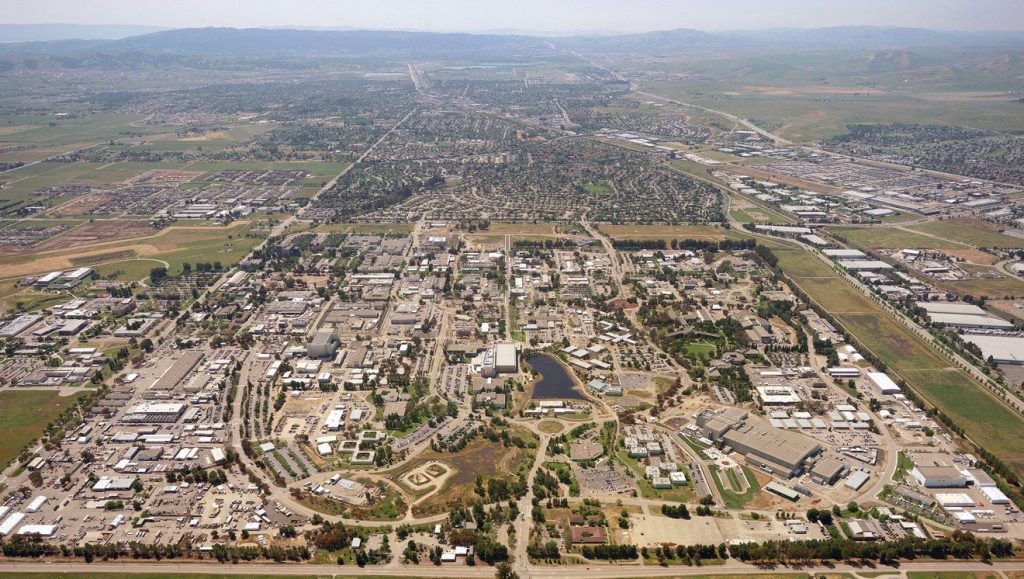
The waste was received at WIPP and will be permanently disposed of in the underground repository about 2,000 feet beneath the surface.
The resumption of shipments from LLNL was the result of a multi-year project and collaboration between the Department of Energy’s Carlsbad Field Office (CBFO), WIPP contractor Nuclear Waste Partnership, National Nuclear Security Administration (NNSA) and the NNSA’s Livermore Field Office, read a DOE news release.
LLNL is primarily a research laboratory that generates transuranic (TRU) waste during its research and engineering operations related to nuclear weapons, plutonium and other technological aspects of the DOE’s nuclear complex.
Texas Gov. Greg Abbott joins opposition to nuclear waste project in New Mexico
“The proposed sites in Texas and New Mexico do not provide the deep geologic isolation required for permanent storage in order to minimize the risks of accidents, terrorism or sabotage which could disrupt the country’s energy supply with catastrophic effects on the American economy,” Abbott wrote to the president.
BY: ADRIANE HEDDEN | currentargus.com
Republican Texas Gov. Greg Abbott was the latest public official to oppose a proposed nuclear storage facility to be built near Carlsbad and Hobbs, along with another in West Texas.
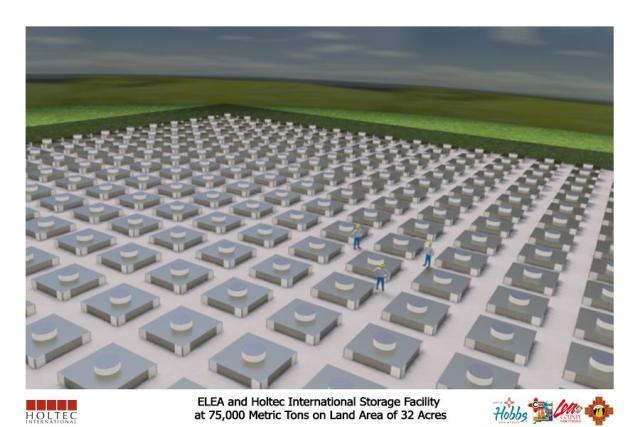
In a Sept. 30 letter to President Donald Trump, Abbott wrote that he worried locating high-level nuclear waste facilities in the Permian Basin region could put the U.S.’s most active oil and gas field at risk.
Holtec International proposed building a consolidated interims storage facility (CISF) to hold spent nuclear fuel rods temporarily in southeast New Mexico while a permanent repository — as required by federal law — was developed.
Activists Decry Feds’ Plans to Ramp Up Nuclear Work at LANL
The federal government should not turn Los Alamos National Laboratory into a hub for making nuclear bomb cores and instead should spend the money to assist the state with education, health care, poverty and climate change impacts, a group of activists and concerned residents said Wednesday at the state Capitol.
BY: SCOTT WYLAND | santafenewmexican.com
The nonprofit Los Alamos Study Group, which supports nuclear disarmament, set up a sound system outside the deserted Roundhouse so critics could express their ire about plans for LANL to produce 30 warhead triggers a year by 2026 without a sitewide environmental study.
The comments, recorded as if the event were a public hearing, will be sent to New Mexico’s congressional delegates, including Sens. Martin Heinrich and Tom Udall, who support LANL reviving and expanding plutonium pit production, saying it will boost the regional economy and strengthen national security.
World’s Biggest Wind and Solar Producer Now Worth More than ExxonMobil
“The shift is as significant as the one the world has seen in the auto industry, with electric vehicle maker Tesla overtaking the biggest car companies in the world in the last year, to the point where it is now valued at more than the next five biggest global car makers combined, despite producing just a fraction of the number of cars.”
BY: GILES PARKINSON | reneweconomy.com
In yet another sign of the pace of the global energy transition – and the massive switch taking place in the investment community – the market value of company that describes itself as the world’s biggest producer of wind and solar power, US utility NextEra, has overtaken that of what used to be the world’s most valuable company, oil major ExxonMobil.
The flip occurred last last week, when NextEra overtook ExxonMobil to become the largest energy company in the US by market value. As Forbes reported, an investment in NextEra a decade ago would have delivered to return of 600 per cent, while an investment in ExxonMobil would have returned minus 25 per cent.
Nuclear Disarmament tops UN agenda
3 Oct 2020 – The United Nations General Assembly holds a high-level meeting to commemorate the International Day for the Total Elimination of Nuclear Weapons. Because of the COVID-19 pandemic, many leaders speak by pre-recorded video to call for a nuclear-weapon-free world.
U.N. Nuclear Ban Treaty Likely to Enter Into Force Early Next Year
“The only way to completely eliminate nuclear risk is to completely eliminate nuclear weapons” and that the nuclear ban treaty “remains the cornerstone of the nuclear disarmament and nonproliferation regime,” Guterres said at a meeting of the General Assembly on Friday.
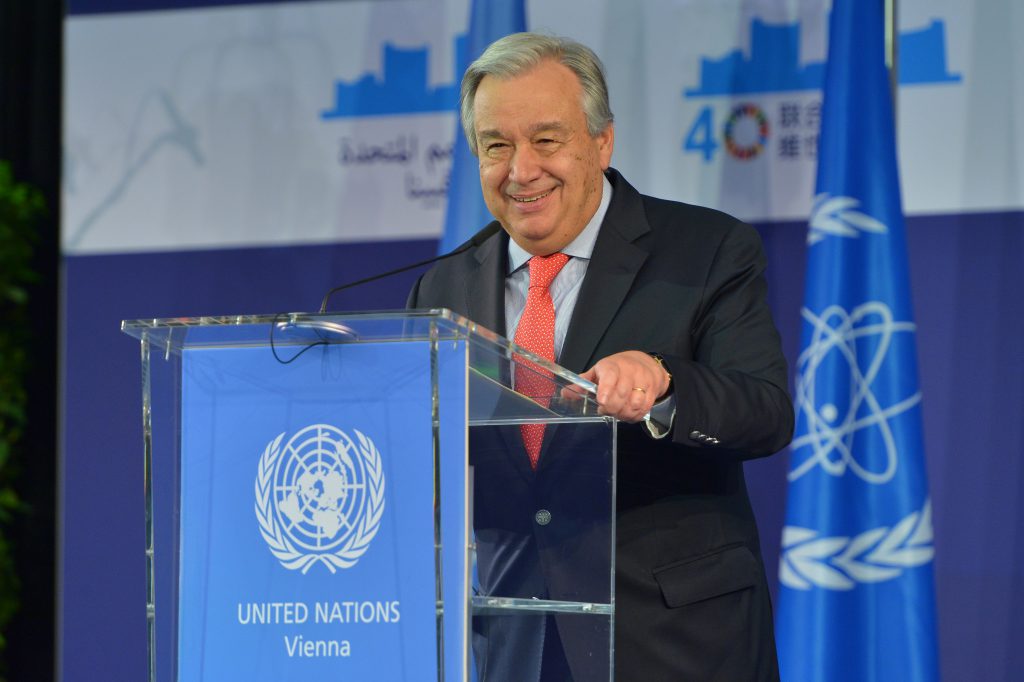
NEW YORK/UNITED NATIONS – A U.N.-adopted nuclear ban treaty is likely to enter into force early next year as the number of signatories is anticipated to reach the needed threshold of 50 soon, possibly later this month, a diplomatic source said Friday.
According to the source and the International Campaign to Abolish Nuclear Weapons (ICAN), 46 countries and regions have completed ratification procedures.
The Treaty on the Prohibition of Nuclear Weapons, adopted in 2017, will enter into force 90 days after it has been ratified by at least 50 countries and regions.
At least four additional countries have already notified the United Nations of their intention to ratify the treaty, the source and the nonprofit organization said, without revealing the names of any such signatories.
Nuclear Ban Pact Should Not Erode Validity of NPT: Confab Chief
Noting that the current international security environment “is not very positive,” [Gustavo Zlauvinen, President-designate of the 2020 Review Conference for the Nuclear Nonproliferation Treaty (NPT)] said a lack of progress on nuclear disarmament will likely “play a big role, unfortunately” at the forthcoming NPT review conference.
By: KYODO NEWS | kyodonews.com
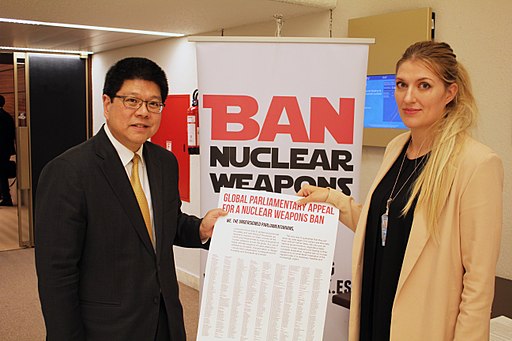
Questioning the effectiveness of a U.N.-adopted nuclear ban treaty, which involves no nuclear powers, the president-designate of an upcoming nonproliferation conference has stressed that the pact should not be allowed to undermine the legitimacy of the Nuclear Non-Proliferation Treaty.
“You can’t have nuclear disarmament without the nuclear weapon states in that system. And that’s why, for the time being, the only treaty that has been accepted by at least five nuclear weapon states, that includes obligations on nuclear disarmament, is the NPT,” Gustavo Zlauvinen said in a recent exclusive interview with Kyodo News.
There is a “huge difference” between the NPT and the pact, Zlauvinen said, adding that it is necessary to make distinctions between the two treaties and “try not to erode the validity and the legitimacy of the NPT.”
He also noted that some members of the NPT are opposed to any reference to the nuclear ban pact at the review conference to be convened early next year and indicated that a wide gap between nuclear power states and those pushing for the nuclear ban treaty could be an “issue of contention” at the NPT gathering.
State Public Land Commissioner Speaks Out Against Nuclear Waste Facility
SANTA FE, N.M. (KRQE) – The state Public Lands Commissioner is speaking out against a proposed nuclear waste storage facility in Lea County. In comments submitted to the National Regulatory Commission, Commissioner Stephanie Garcia Richard says that Holtec International ignored concerns about storing nuclear waste in a highly active oil field.
BY: KRQE Staff | krqe.com
Read Garcia Richard’s full comment and submission to U.S. Nuclear Regulatory Commission
Commissioner Garcia Richard’s released the following statement in a news release Monday regarding the public comment:
I remain vehemently opposed to this proposal for reasons stated since I took office in January 2019. Holtec has misrepresented themselves and this project through every step of the process, including recently raising the intended number of nuclear canisters from 500 to 10,000. They have misrepresented their purported control of the site while also lying about their ability to restrict oil and gas operations in the area.
Holtec has ignored numerous safety concerns regarding the transportation of high-level nuclear waste through New Mexico communities, as well as failing to address questions about storing such waste in the middle of a highly active oil field. As Commissioner of Public Lands, I have a constitutional obligation to protect state trust land for future generations. This project comes with far too much risk and little to no reward.
Activists Push Congress to Revive Probe Into Links Between Nuclear Plants and Cancer
“Nuclear Regulatory Commission killed study in 2015 after spending five years and $1.5 million on the effort”
BY: TERI SFORZA | ocregister.com
Scientists and activists were stunned back in 2015 when the Nuclear Regulatory Commission pulled the plug on what was designed to be the best study of cancer near nuclear power plants ever done.
The pilot study’s price tag was $8 million — a pittance in the NRC’s $1 billion budget — and five years of work had already gone into it. But it was killed because officials were convinced it would be too costly and couldn’t link reactors to disease, a Southern California News Group investigation found.
Last week, a petition with some 1,200 signatures demanding that the study resume went to members of Congress representing Southern and Central California.
Texas Governor Urges Trump To Oppose Nuclear Waste Plans
“It’s an unusual thing for environmentalists and oil companies to be on the same page, and we are on this issue,” says an Austin-based environmental advocate.
BY: Travis Bubenik, Courthouse News; | texasstandard.com

A view of an existing site in West Texas where a company wants to store highly radioactive waste from the nation’s nuclear power plants, one of two such proposals the Texas governor now says he opposes.
From Courthouse News Service:
Texas Governor Greg Abbott has come out against two rival plans to ship highly radioactive waste from the nation’s nuclear power plants to sites on the Texas-New Mexico border, saying either plan would be unsafe and would threaten the region’s sprawling Permian Basin oilfield.
“A stable oil and gas industry is essential to the economy, and crucial to the security of our great nation,” Abbott, a Republican, wrote in a letter to President Donald Trump on Wednesday. “Allowing the interim storage of spent nuclear fuel and high-level nuclear waste at sites near the largest producing oilfield in the world will compromise the safety of the region.”
The nuclear waste plans have for years drawn the ire of advocacy groups who worry about a range of possible environmental and safety threats, but oil and gas interests have become increasingly involved in the fight as well.
A coalition of oil companies and West Texas landowners called Protect the Basin was launched in 2018 to oppose the plans and has more recently stepped up its outreach. One of the coalition members, a ranching and oil company tied to one of the nation’s richest families, has been involved in fighting the issue all the way up to the D.C. Circuit.
Two’s a crowd: Nuclear and renewables don’t mix
“If countries want to lower emissions as substantially, rapidly and cost-effectively as possible, they should prioritize support for renewables, rather than nuclear power.”
BY: University of Sussex | techxplore.com
That’s the finding of new analysis of 123 countries over 25 years by the University of Sussex Business School and the ISM International School of Management which reveals that nuclear energy programs around the world tend not to deliver sufficient carbon emission reductions and so should not be considered an effective low carbon energy source.
Researchers found that unlike renewables, countries around the world with larger scale national nuclear attachments do not tend to show significantly lower carbon emissions—and in poorer countries nuclear programs actually tend to associate with relatively higher emissions.
U.S., Russia Move Toward Outline of Nuclear Deal, Administration Says
“Trump administration official’s comments suggest the two sides might be able to come to terms on broad principles”
BY: MICHAEL R. GORDON | wsj.com
 U.S. and Russian negotiators made progress Monday on a new framework accord that would freeze each side’s nuclear arsenal and outline the parameters for a detailed treaty that would be negotiated next year, a senior Trump administration official said.
U.S. and Russian negotiators made progress Monday on a new framework accord that would freeze each side’s nuclear arsenal and outline the parameters for a detailed treaty that would be negotiated next year, a senior Trump administration official said.
The accord, if it comes together in the coming month, would give each side something it has sought. President Trump would have a demonstration that his diplomacy toward Moscow has borne fruit, arriving before the November election. Russia would get an extension of the New START…
The Day Nuclear War Almost Broke Out
“In the nearly sixty years since the Cuban missile crisis, the story of near-catastrophe has only grown more complicated. What lessons can we draw from such a close call?”
“…what almost no one knew until four decades later—was that one of B-59’s torpedoes was carrying what the Soviets called “special ammunition.” The “special” part was a fifteen-kiloton nuclear warhead. Had Savitsky’s orders been carried out, chances are good that the Americans would have responded in kind, and a full-scale nuclear war would have broken out. There should, it seems, be a useful lesson to be learned from that frantic afternoon. But what, in God’s name, is it?”
BY: ELIZABETH KOLBERT | newyorker.com
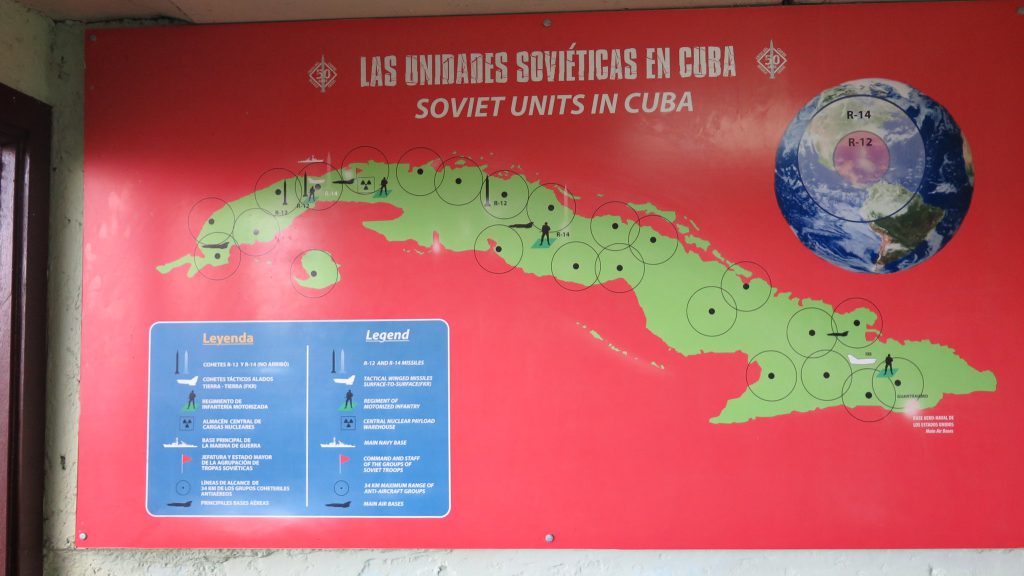
On October 27, 1962, a day that’s been described as the “most dangerous” in human history, a Soviet submarine designated B-59 was churning through the Sargasso Sea when suddenly it was rocked by a series of explosions. “It felt like you were sitting in a metal barrel, which somebody is constantly blasting with a sledgehammer,” Vadim Orlov, a communications specialist on board the sub, later recalled. “The situation was quite unusual, if not to say shocking, for the crew.”
Four weeks earlier, B-59 had been dispatched from the U.S.S.R. with three other so-called F-class subs as part of Operation Anadyr, Nikita Khrushchev’s top-secret effort to install ballistic missiles in Cuba. (The Anadyr is a river that flows into the Bering Sea; the code name was intended to make even soldiers participating in the operation believe they were headed somewhere cold.) Pretty much from the outset of the voyage, things had not gone well.
“For the sailors, this Cuban missile crisis started even before its beginning,” Ryurik Ketov, the captain of another Cuba-bound sub, once observed. The Atlantic that October was turbulent, and the pitching sea made it tough for the boats to maintain their desired speed.
“You have to hold on to something even in your sleep, or else you’ll fall off,” a crew member complained. Communications, too, were difficult. Once past Iceland, the subs had trouble contacting Moscow; for a while, according to Ketov, the only voices audible over the radio “were those of Murmansk fishermen.”
US, Russia to hold latest nuclear arms talks in Finland
“The Finnish president’s office says the United States and Russia will hold a round of nuclear arms control talks in Finland’s capital, Helsinki, on Monday to follow up on negotiations in Austria this summer”
By: Associated Press | abcnews.com
HELSINKI — The United States and Russia will hold a round of nuclear arms control talks in the Finland’s capital, Helsinki, on Monday to follow up on negotiations in Austria this summer, the Finnish president’s office said.
“The round of discussions on strategic stability and nuclear weapons between the United States and Russia, which began in Vienna in the summer, will continue in Helsinki on Monday,” the office of the Finnish President Sauli Niinisto said in a brief statement late Sunday.
The office said nuclear arms negotiators from Washington and Moscow met a previous time in Finland in 2017.
“Finland welcomes the negotiators, this time (U.S.) Ambassador (Marshall) Billingslea and (Russian) Deputy Foreign Minister (Sergei) Ryabkov,” the statement said, adding that Niinisto would meet both representatives after the talks.
Revival of Renewables Sought in Debate Over Nuclear Bailout
“Most of the effects of the law at the heart of a $60 million Statehouse bribery scandal are set to take effect Jan. 1. The law generally creates or expands consumer-fueled subsidies for legacy nuclear and coal-fired power plants in Ohio and offsets those costs by rolling back and eliminating existing surcharges designed to create markets for renewable sources like wind and solar and reduce energy consumption overall.”
By: Jim Provance | limaohio.com
COLUMBUS — EDP Renewables North America, the world’s fourth-largest wind developer, invested more than $700 million into projects in Paulding and Hardin counties when Ohio first rolled out the red carpet.
But more recent signals from the state — including last year’s passage of the $1 billion bailout of two nuclear plants — have convinced the company to look elsewhere for its future investments.
“HB 6 created a false dichotomy — that Ohio must sacrifice a clean-energy future at the expense of its energy past,” Erin Bowser, EDP’s director of project management, on Wednesday told a House of Representatives select committee now considering repealing House Bill 6.
Nuclear Power: A Gargantuan Threat
“But if we are truly to have a world free of the horrific threat of nuclear arms, the goal needs to be more. A world free of the other side of the nuclear coin – nuclear power –is also necessary. Radical? Yes, but consider the even more radical alternative: a world where many nations will be able to have nuclear weapons because they have nuclear technology. And the world continuing to try using carrots and sticks to try to stop nuclear proliferation — juggling on the road to nuclear catastrophe.”
By: KARL GROSSMAN | independentaustralia.net

At the start of 2020, Bulletin of the Atomic Scientists moved its Doomsday Clock to 100 seconds to midnight — the closest to midnight, doomsday, since the clock started in 1947.
There are two gargantuan threats — the climate crisis and nuclear weapons/nuclear power.
The only realistic way to secure a future for the world without nuclear war is for the entire planet to become a nuclear-free zone — no nuclear weapons, no nuclear power. A nuclear-free Earth.
How did India get an atomic bomb in 1974? Canada supplied a reactor and the U.S. Atomic Energy Commission provided heavy water for it under the U.S. so-called “Atoms for Peace” program. From the reactor, India got the plutonium for its first nuclear weapon.
Any nation with a nuclear facility can use plutonium produced in it to construct nuclear arms.
India Successfully Tests Nuclear-Capable Shaurya Missile
“’This kind of demonstration of capability/power is extremely important to give a loud message to another nuclear-powered country that they should not take us for granted. This will bring in inherent dissuasion that will further discourage our adversaries from using nuclear weapons (against us),’ said former Northern Army commander Lieutenant General BS Jaswal (retd).”
By: Debabrata Mohanty, Rahul Singh | Edited by Sparshita Saxena Bhubaneshwar/New Delhi | hindustantimes.com
India on Saturday successfully test-fired a new version of the nuclear-capable hypersonic Shaurya missile with a range of 750 kilometres from a defence facility off the Odisha coast on Saturday, officials said. The launch is the latest in a string of recent weapons tests amid military tensions with China in the Ladakh sector.
The launch came three days after India test-fired an extended-range BrahMos surface-to-surface supersonic cruise missile from the Integrated Test Range at Balasore in Odisha. The cruise missile can hit targets 400 kilometres away – its range increased from the existing 290 kilometres.
Oak Ridge Environmental Peace Alliance: Response to NNSA issuing Amended Record of Decision on EU operations at Y-12 Plant
GOVERNMENT ISSUES RECORD OF DECISION TO CONTINUE NUCLEAR WEAPONS PRODUCTION AT Y-12 COMPLEX IN OAK RIDGE, DOWNPLAYING RISK TO WORKERS AND PUBLIC CITIZENS SAY, “A BEGINNER’S CLASS IN DISSEMBLING”
The National Nuclear Security Administration issued an Amended Record of Decision for the Continued Operation of the Y-12 National Security Complex* on September 30, 2020. NNSA says the new decision updates its October 2019 AROD.
The AROD dismisses risks from earthquakes and declares that NNSA will continue to conduct nuclear weapons manufacturing operations in facilities that do meet environmental and safety codes for at least 20 more years under its Enriched Uranium program. This AROD is the result of a federal court decision in September 2019 in a case brought by the Oak Ridge Environmental Peace Alliance, Nuclear Watch New Mexico, the Natural Resources Defense Council and four individual plaintiffs. In that decision, Chief Judge Pamela Reeves ruled NNSA had not met the requirements of the National Environmental Policy Act. Judge Reeves vacated two Supplement Analyses and one previous AROD and ordered NNSA to conduct further analysis on the risks of earthquakes.
“The new Amended Record of Decision is a pretty respectable beginner’s class in dissembling,” said OREPA coordinator Ralph Hutchison. “The first lie is a big one, and easily disproved. NNSA says ‘The court further held that NNSA is not required to prepare a Supplemental Environmental Impact Statement for the UPF Project or the Extended Life Program.’ This is simply not true.
“The court explicitly did not make that finding; it would have been inappropriate. What the court did was tell NNSA they didn’t have to prepare a new or Supplemental EIS due to changed circumstances. Instead, they had to prepare a Supplement Analysis—one step earlier in the process—to determine whether or not a new or Supplemental EIS was required. That is the only purpose of an SA, and NNSA knows it. They just tried to spin it. Either that, or they think the court didn’t understand what it was saying.
SC Judge Freezes Federal Funds From $600 Million Plutonium Settlement
“A former Democratic state legislator, Sellers said that from his experience, he knows if the $600 million — or however much money there is — goes into the general fund, the money will not be spent on the counties impacted by the storage of plutonium.”
BY: JOHN MONK | thestate.com
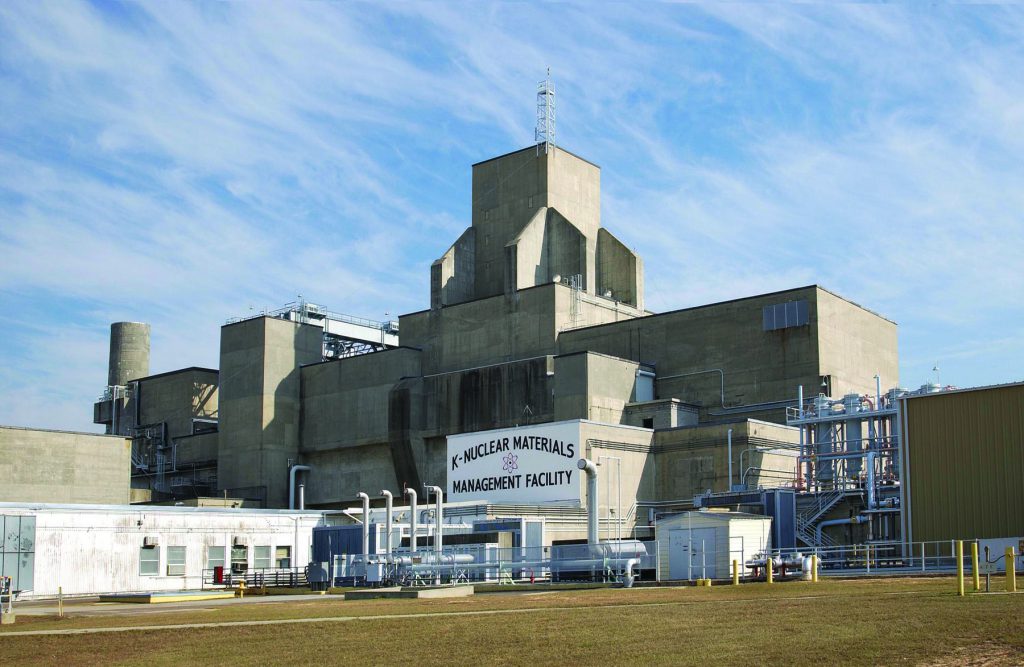
Credit SAVANNAH RIVER SITE / SRS.GOV
BARNWELL, SC – A state circuit judge on Wednesday issued a temporary injunction freezing $600 million in federal funds that came to South Carolina as a result of a political settlement in a long-running dispute over what to do with some 11 tons of deadly plutonium now stored at the Savannah River Site in Barnwell County.
Judge Clifton Newman issued the injunction against State Attorney General Alan Wilson shortly before noon Wednesday in response to a motion by State Sen. Brad Hutto, D-Orangeburg, who represents Barnwell County, Allendale County and five other counties in the area.
Newman’s injunction, issued from the bench in a Barnwell County courtroom, is temporary and within a month he is expected to hold another hearing that will fully air differing sides on what to do with the $600 million.
“All federal funds received by the state must be appropriated by the state in accordance with the federal purpose for which it was intended,” Hutto told the judge. Since the funds in the settlement were given by the federal government as compensation for the plutonium stored in their geographic area, they should generally be spent there in those impacted counties along the state’s southwestern boundary, Hutto argued.
It is essential that the “identity” of the federal funds be preserved before Wilson routes the money into the state’s general fund, where other lawmakers might seek to spend it for purposes outside those South Carolina counties Hutto represents, Hutto told the judge.
Compact Nuclear Fusion Reactor Is ‘Very Likely to Work,’ Studies Suggest
“…the hurdles to building a machine that can create and control a fusion plasma — a roiling ultrahot cloud of atoms that will damage or destroy anything it touches — are enormous.”
BY: HENRY FOUNTAIN | nytimes.com
Scientists developing a compact version of a nuclear fusion reactor have shown in a series of research papers that it should work, renewing hopes that the long-elusive goal of mimicking the way the sun produces energy might be achieved and eventually contribute to the fight against climate change.
Construction of a reactor, called Sparc, which is being developed by researchers at the Massachusetts Institute of Technology and a spinoff company, Commonwealth Fusion Systems, is expected to begin next spring and take three or four years, the researchers and company officials said.
Although many significant challenges remain, the company said construction would be followed by testing and, if successful, building of a power plant that could use fusion energy to generate electricity, beginning in the next decade.
DOE Activities Raise Safety Concerns about Plutonium at Three Facilities
“The DOE proposal to dispose of the useless MOX fuel pellets is unprecedented, but has been subjected to only a brief mention in an environmental analysis on pit production. Tom Clements, director of SRS Watch, says, “The analysis conducted on the disposal of the plutonium fuel is totally inadequate and a full Environmental Impact Statement (EIS) must be conducted before any repackaging and shipment to WIPP. ”
September 30, 2020 | nuclearactive.org
According to the Department of Energy (DOE), plans are under way to remove unused plutonium fuel from the Los Alamos National Laboratory (LANL). The uranium-plutonium fuel, containing around 26.4 kilograms (58.2 pounds) of weapon-grade plutonium, is called “mixed-oxide,” or MOX. In a late-August document, DOE stated that the MOX fuel, produced in France for a program at the Savannah River Site (SRS), would be disposed of as transuranic waste and therefore go to the Waste Isolation Pilot Plant (WIPP).
At present the MOX fuel, in the form of pellets, is stored at LANL’s PF-4 plutonium facility. DOE needs to empty PF-4 to have space for its planned annual production of up to eighty plutonium “pits”, or triggers, for nuclear weapons.
Nuclear News Archives – 2021
Nothing Found
It seems we can’t find what you’re looking for. Perhaps searching can help.
Nuclear News Archives – 2020
Nothing Found
It seems we can’t find what you’re looking for. Perhaps searching can help.
Nuclear News Archives – 2019
Nothing Found
It seems we can’t find what you’re looking for. Perhaps searching can help.
Nuclear News Archives – 2018
Nothing Found
It seems we can’t find what you’re looking for. Perhaps searching can help.



